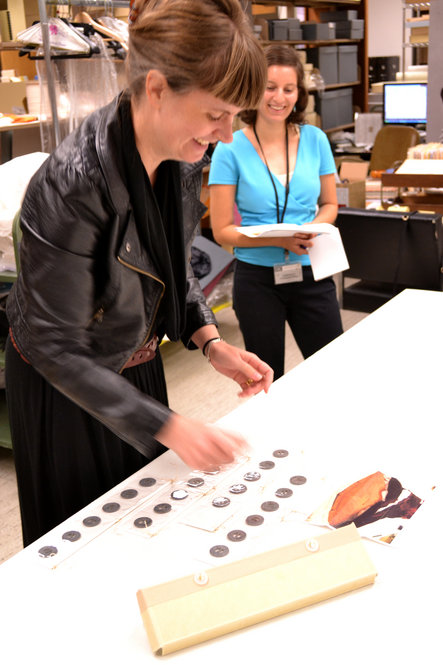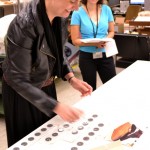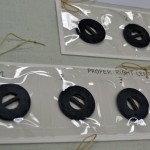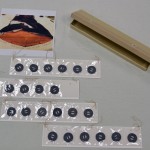
The Ransom Center has begun conservation work on the gowns from Gone With The Wind, and readers can follow the progress of the project on the Center’s website. Cultural Compass solicited questions from readers, and staff will answer a few of those questions in the coming weeks on this blog. Below, Jill Morena, collection assistant for costumes and personal effects at the Ransom Center, answers a question about the repair process after the conservation team removed weights from the burgundy ball gown.
Question: Can you explain the repair process; i.e., how did you go about re-stitching the casings for the weights? (type of thread, hand- or machine-stitched?) Does that type of “tampering” significantly affect the item’s value? Or is the trade-off worth it in terms of the efforts to arrest further harm?
What kind of a background do conservators have to be competent in textile preservation such as this?
Answer: When a garment enters a museum or archive’s collection, the balance between preservation and access becomes an ongoing discussion. The garment has passed out of the private sphere and into a public institution, so questions of value shift from monetary and market value to cultural value and long-term preservation. It is the institution’s charge to preserve the garment for future generations and to make items available for public view. The institution must consider these two aims and continually make decisions that allow a garment to have a “second life.” The institution must make the preservation, condition, and longevity of the garment a top priority.
Conservator Cara Varnell’s remark, “this girl’s never dancing again,” alludes to the archival second life of the dress that Vivien Leigh once wore. It is no longer being worn or used, and yet the gown is not lifeless; it still retains traces of the former wearer in physical form on the fabric, indeed in the knowledge that Vivien Leigh, a celebrated actress, once wore the gown.
Removing original material from a museum or archival item is a choice that is not taken lightly, and it is often in the best interests of the item’s “well-being.” Weights were removed from the burgundy ball gown because the strain created by their heaviness caused small holes at the waistline and hemline. Packing and unpacking from storage containers also places strain on the garment. Removal of the weights decreases the likelihood of damage to the gown when it is handled, dressed, and displayed.
Removing the weights was a preservation-motivated task that is also reversible. Only the smallest amount of thread was removed, just enough to slip the weight out from the bottom of its cloth compartment. We kept the weights and documented exactly where and how they were removed. If for any reason in the future it is decided that the weights should be returned to their compartments, there is a clear map for doing so.
If stitches or sewing of any kind is needed for a conservation treatment on a historical garment, it is usually done by hand. Conservators learn a variety of stitches, and their choice of stitch and the type of thread depends upon the condition of the garment, its construction and fabric, and the intended goals of the treatment.
Conservators specialize in a variety of mediums, including books, paper, photographs, paintings, and textiles. Conservators must have a strong background in science and the humanities, fulfill many volunteer hours at archives or museums before they can apply to a graduate program, hold an advanced degree with courses in their area of specialization, and complete years of apprenticeship under an experienced mentor. For more information about conservators and their work, visit the website of The American Institute for Conservation of Historic and Artistic Works (AIC), the professional organization for conservators in the United States.
Please click on the thumbnails below to view full-size images.



